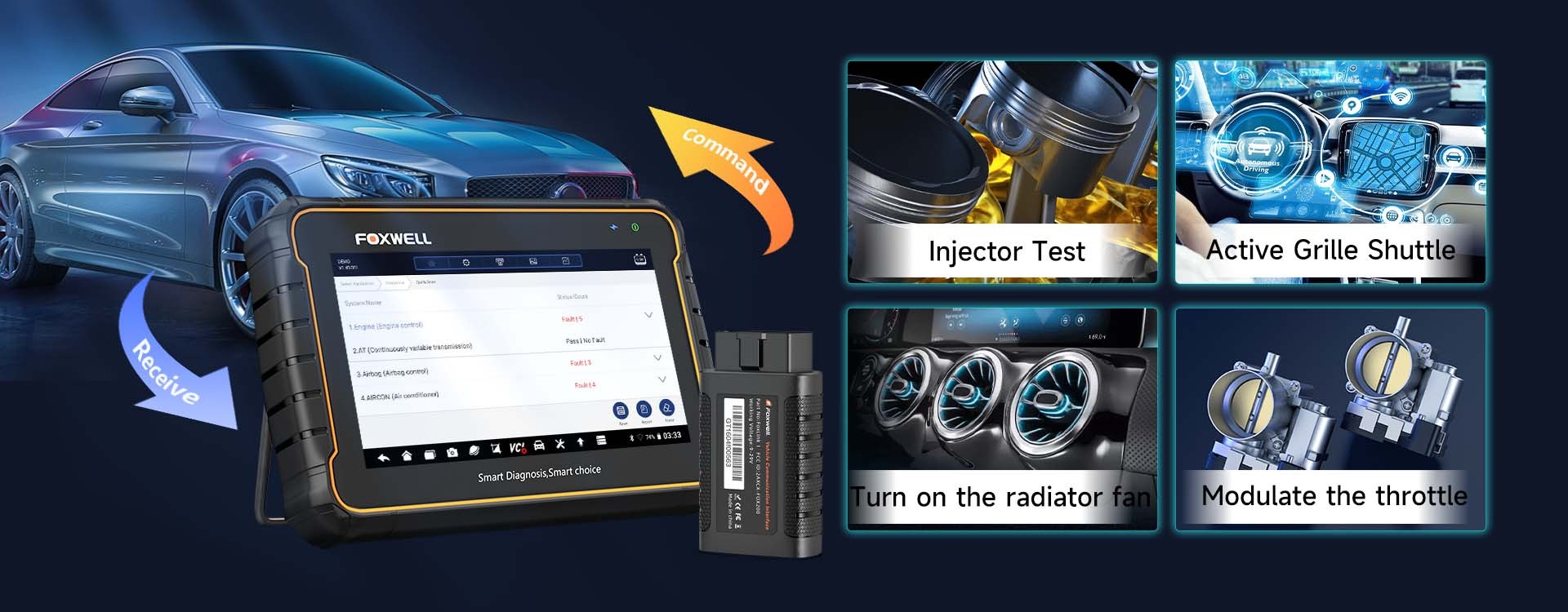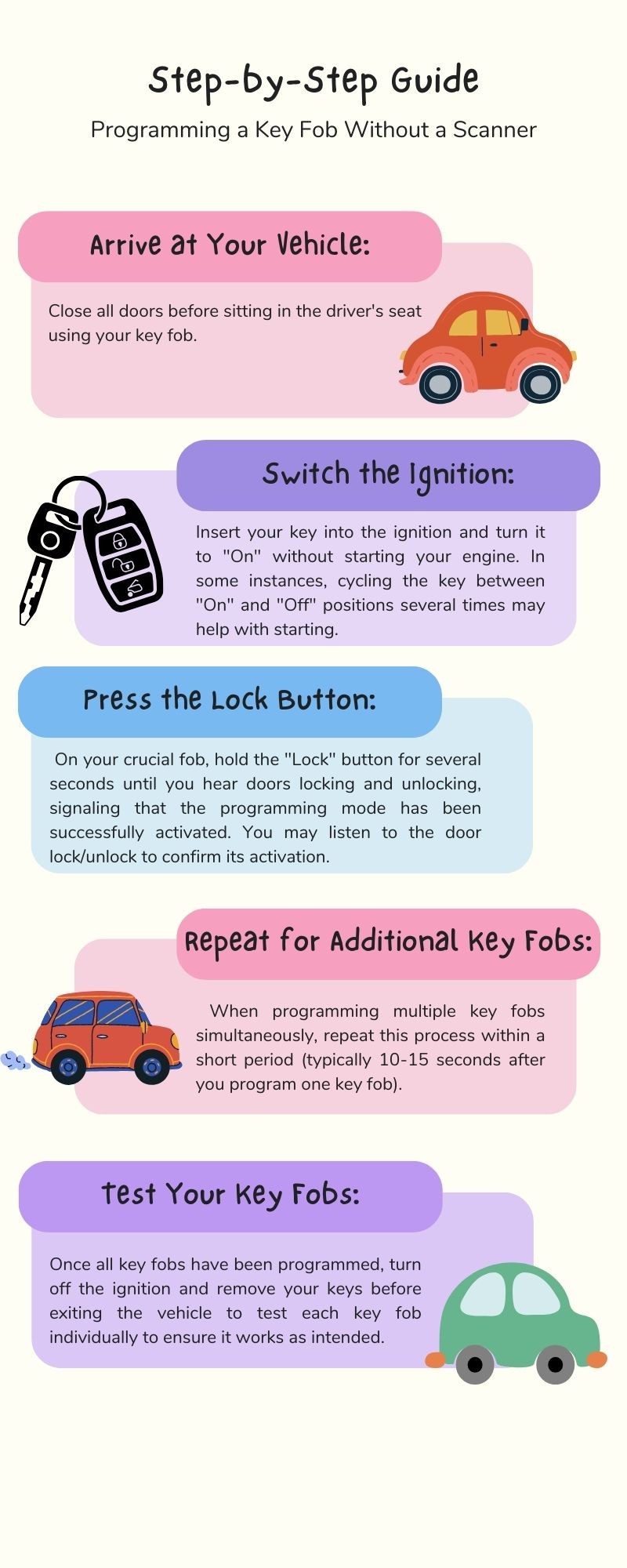Understanding whether you need a diagnostic scanner to program your car key fob largely depends on your vehicle’s make, model, and year. While older vehicles often allow for manual programming, modern and high-end models with sophisticated security systems typically require an advanced car diagnostic scanner to synchronize the key fob with the car’s electronic systems.
This article will explore when a diagnostic scanner becomes necessary for key fob programming and provide guidance through the process for various car models.
Understanding Car Key Fob Programming: What You Need to Know
Before diving into the specifics of when a scanner is needed, it’s crucial to understand what car key fob programming entails. A key fob is more than just a remote to lock and unlock your doors; it’s an integral part of your vehicle’s electronic security system, enabling various functions.
Programming a key fob is the process of teaching your vehicle to recognize and respond to the signals from your key fob. This alignment ensures seamless operation of features like remote locking, unlocking, and sometimes even starting your car. The programming process can range from simple steps found in your car’s manual to more complex procedures requiring specialized tools to access the vehicle’s computer systems.
Scanner or No Scanner? Key Fob Programming Requirements
Whether you need a diagnostic scanner for key fob programming isn’t a one-size-fits-all answer. It largely depends on the age, make, and model of your vehicle. The requirements can vary significantly from vehicle to vehicle.
For many older vehicles, especially those from the late 1990s and early 2000s, key fob programming is often straightforward and can be done manually. These vehicles typically come with built-in procedures that allow you to program a new key fob without needing any specialized tools.
Manual programming usually involves a sequence of actions, such as turning the ignition on and off, opening and closing doors, and pressing specific buttons on the key fob in a particular order. These steps are usually detailed in the vehicle’s owner’s manual, making it a task that most car owners can handle themselves.
However, modern vehicles, especially those equipped with advanced security systems, often necessitate a diagnostic scanner for key fob programming. These vehicles have more complex electronic architectures that require a scanner to interface with the vehicle’s onboard computer. Scanners like the Foxwell NT809TS are designed to communicate with these advanced systems, allowing for the programming of key fobs and other components like tire pressure monitoring systems (TPMS).
These scanners utilize specific communication protocols to securely connect the key fob to the vehicle’s security system, ensuring that all security features function correctly. This is particularly crucial for features like immobilizers, which prevent the car from starting without a correctly programmed key.
Luxury and high-end vehicles take security complexity a step further. Brands like BMW, Mercedes-Benz, and Audi commonly employ encrypted communication protocols to enhance vehicle security. This level of encryption makes it virtually impossible to program a key fob without a specialized diagnostic scanner. Moreover, not just any scanner will suffice; it needs to be one that is compatible with these advanced protocols. The Foxwell NT809TS, for example, is capable of handling these sophisticated protocols, making it an essential tool for professional mechanics and serious DIYers working with luxury vehicles.
In summary, the necessity of a diagnostic scanner for key fob programming is heavily influenced by your vehicle’s technology and security features. While manual programming might suffice for older models, newer and more complex vehicles typically require a scanner to ensure successful and secure key fob programming. Investing in a tool like the Foxwell NT809TS can streamline this process, providing a reliable solution for a wide range of vehicles.
Situations Where a Diagnostic Scanner is Essential for Key Fob Programming
A diagnostic scanner becomes indispensable in several scenarios, particularly with newer vehicles that have advanced security features. Let’s delve deeper into these situations:
Advanced Security Systems: Modern vehicles are frequently equipped with immobilizer systems. These systems are designed to prevent the engine from starting unless a correctly programmed key fob is present. Programming a new key fob for such systems requires accessing the vehicle’s security system, typically through the ECU (Electronic Control Unit). This access almost always necessitates a diagnostic scanner capable of communicating with the ECU to authorize and program the new key fob.
Programming Multiple Key Fobs: When you need to program multiple key fobs for a single vehicle, a diagnostic scanner can be crucial for ensuring all fobs are correctly synchronized with the car’s system. Some vehicles require all key fobs to be programmed simultaneously during a single session to function correctly. A scanner simplifies this process by providing a centralized interface to manage and program multiple fobs at once.
Replacing Lost or Damaged Key Fobs: Replacing a key fob that has been lost or damaged often involves more than just programming a new one. For security reasons, it’s advisable to clear the lost or damaged fob’s data from the vehicle’s memory. This ensures that the old fob can no longer be used to access or start the car. This data clearing process, as well as programming the new fob, typically requires a diagnostic scanner, especially in vehicles with enhanced security features. The scanner can reset the system and securely add the new key fob.
Factory Reset of Keyless Entry System: In certain situations, such as when there’s been suspected tampering with the electronic systems or when replacing or upgrading the ECU, a factory reset of the car’s keyless entry system might be necessary. This reset process usually requires a diagnostic scanner to access and reset the system’s parameters. It’s a more complex procedure typically needed when system modifications have compromised the vehicle’s electronics or when significant ECU updates are performed.
Manual Key Fob Programming: A Step-by-Step Guide (Scanner-Free)
If you’re fortunate enough to own a vehicle that doesn’t require a scanner for key fob programming, the process is generally straightforward. Here’s a general guide that applies to many older or less complex vehicles:
- Enter Your Vehicle: Begin by getting into your car and ensuring all doors are completely closed.
- Ignition Cycling: Insert your key into the ignition. Turn the ignition to the “On” position without starting the engine. In some models, you might need to cycle the key between “On” and “Off” multiple times in a specific sequence to enter programming mode. Refer to your owner’s manual for the exact sequence for your vehicle.
- Engage Programming Mode: Press and hold the “Lock” or “Unlock” button on your key fob for a few seconds. In some cases, you might need to press another button simultaneously. Listen for a signal from your car, such as the doors locking and unlocking automatically, which indicates that the system has entered programming mode.
- Program Additional Key Fobs (If Applicable): If you are programming multiple key fobs, repeat the button-pressing process for each additional fob within a short timeframe, typically within 10-15 seconds of programming the first one.
- Test the Key Fobs: After programming all key fobs, turn the ignition off and remove the key. Exit the vehicle and test each key fob to ensure it is working correctly by locking and unlocking the doors remotely.
Important Note: This is a general guide, and the exact steps can vary significantly depending on your car’s make and model. Always consult your vehicle’s owner’s manual for precise, model-specific instructions for manual key fob programming. Incorrect steps can lead to unsuccessful programming, so accuracy is key.
DIY Key Fob Programming vs. Professional Service: Pros and Cons
| Aspect | DIY Key Fob Programming | Professional Service |
|---|---|---|
| Cost | Generally less expensive, particularly if no scanner is required. | Can be more costly, especially at dealerships, due to labor and equipment charges. |
| Convenience | Can be done at home at any time, offering maximum convenience. | Requires scheduling an appointment and traveling to a service location (dealership, locksmith, etc.). |
| Time | Often quicker for compatible vehicles, especially manual programming. | May take longer due to appointment scheduling and service duration. |
| Success Rate | High for older, simpler models; lower for newer, complex, or luxury vehicles. | Generally high, especially for complex or luxury vehicles, due to expertise and specialized tools. |
| Tools Required | Potentially none or just basic tools for manual programming. | Requires professional-grade diagnostic scanners and potentially other specialized tools. |
| Security | Lower security risk if instructions are followed correctly for manual programming. | Professional services ensure a high level of security, especially when clearing old key fob data and programming new fobs securely. |


Choosing between DIY key fob programming and professional service depends on your vehicle, your technical comfort level, and your budget. DIY programming can be a cost-effective and convenient option for older vehicles. However, for newer, more complex cars, opting for professional service is often the wiser choice to ensure security and reliability.
Troubleshooting Common Key Fob Programming Issues
Even when equipped with the right tools and instructions, key fob programming can sometimes present challenges. Here are some common issues and troubleshooting tips:
Key Fob Not Detected: If your vehicle fails to recognize the key fob during the programming process, the first step is to check the key fob battery. A weak or dead battery is a common culprit. Replace the battery and try the programming sequence again.
Programming Sequence Failure: If the programming sequence doesn’t seem to work as expected, double-check that you are precisely following the correct steps for your specific vehicle make and model. Even minor deviations from the required procedure can prevent successful programming. Refer to your owner’s manual or a reliable online guide specific to your car.
Synchronization Problems with Multiple Key Fobs: If you are programming multiple key fobs and they are not synchronizing correctly, try restarting the entire programming process from the beginning. Ensure that you program each key fob within the specified timeframe to maintain synchronization.
Security Light Remains On: If your vehicle’s security light stays illuminated after key fob programming, it could indicate that the programming was unsuccessful or that there is an underlying issue with the vehicle’s security system. In such cases, seeking professional diagnostic assistance is advisable to identify and resolve the problem.
Conclusion
Determining whether you need a diagnostic scanner for car key fob programming hinges on your vehicle’s specific characteristics, primarily its age, make, and model. While older vehicles often accommodate straightforward DIY programming without specialized tools, newer, more technologically advanced models typically require professional intervention or the use of a diagnostic scanner.
Before attempting key fob programming, understanding your vehicle’s requirements and having the necessary tools or professional support in place is crucial. Whether you choose to tackle it yourself or seek professional help, being informed ensures a smoother and more successful key fob programming experience.
FAQs
Can you really program a key fob yourself?
Yes, you can program a key fob yourself, particularly for older vehicles. Many older models offer manual programming procedures detailed in the owner’s manual. However, modern vehicles with advanced security systems often necessitate a diagnostic scanner or professional assistance for successful key fob programming.
Can I use my phone as a car code reader?
Yes, you can use your smartphone as a car code reader. This is achieved by connecting an OBD2 adapter to your car’s OBD2 port and pairing it with your phone via Bluetooth or Wi-Fi. You will also need to install a compatible app on your phone to read and interpret vehicle diagnostic codes.
Can you program a car with OBD2?
Yes, OBD2 scanners can be used to program certain features in a car, including key fobs and resetting various vehicle systems. However, the extent of programming capabilities varies depending on the specific scanner and the vehicle’s make and model. Advanced scanners offer more comprehensive programming functions compared to basic models.